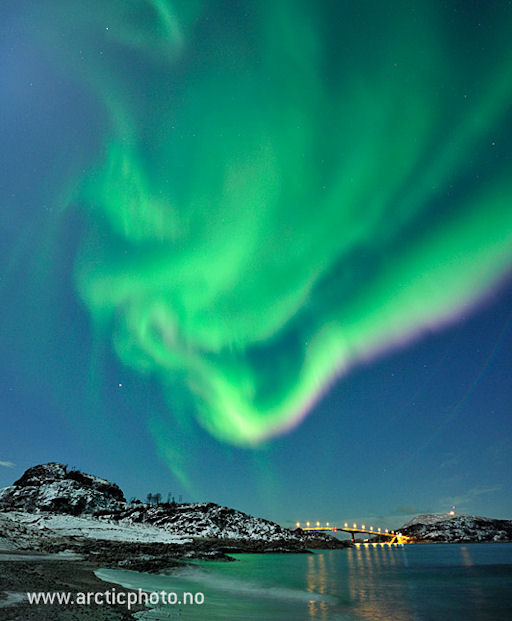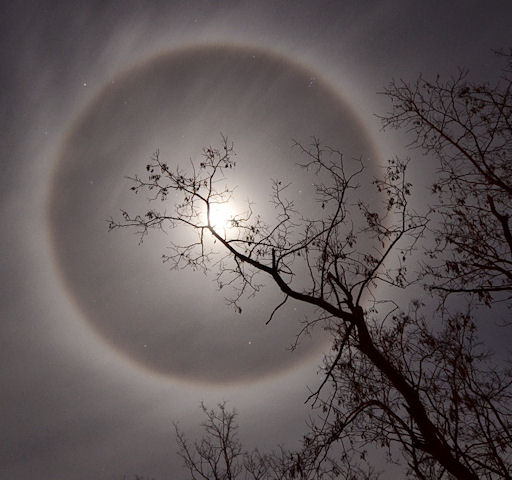Don't just watch shooting stars. Wear them! Authentic meteorite jewelry for Christmas is now available in the SpaceWeather Store. | | |
WOLF MOON: Can you hear the howls? According to folklore, tonight's full moon is the "Wolf Moon," named after the singing packs of wolves once heard by Native Americans during the winter month of January. Images: #1.
GEOMAGNETIC ACTIVITY: Forecasters said a CME might deliver a glancing blow to Earth's magnetic field on Jan. 7th, and indeed it might have. There was no sharp change in the solar wind speed signaling a CME's passage. There was, however, a surge in ground currents in northern Norway during the late hours of Jan. 7th, which suggests that something did rattle Earth's magnetic field. Rob Stammes recorded the disturbance from his laboratory in Lofoten.
Ground currents often herald auroras, and true to form the skies turned vivid green:

"We witnessed a brief but beautiful outburst of auroras," says photographer Bjørn Jørgensen of Sommaroy, Norway. "Even the sea turned green from the bright colors overhead."
New: January 2012 Aurora Gallery
[previous Januaries: 2010, 2009, 2008, 2007, 2005, 2004]
BE ALERT FOR MOON HALOES: Across much of the United States, there's not much snow on the ground. There is, however, ice in the air. You can see it around the Moon:

"There was a remarkable halo around the Moon this Friday evening," says photographer Dan Bush of Albany, Missouri. "It was the most vivid and long lasting one I've seen in 15+ years."
Moon haloes are caused by ice crystals in cirrus clouds 5 to 10 km above the ground. Crystals catch the light of the Moon and bend its rays into a luminous ring, as shown above. With the full Moon less than a day away, now is a good time to be alert for Moon haloes.
more images: from Francesc Pruneda of Palamós, Catalonia, Spain; from Chris Hetlage of Deerlick Astronomy Village, GA; from Eddie Ledbetter of Register, GA; from Tanner Schaaf of Kingston, Minnesota; from Jim Tegerdine of Marysville, Washington; from Guy of Masset, B.C., Canada;
New: Comet Lovejoy Gallery
[previous comets: McNaught, Holmes, Lulin, Tuttle, Ikeya-Zhang]

